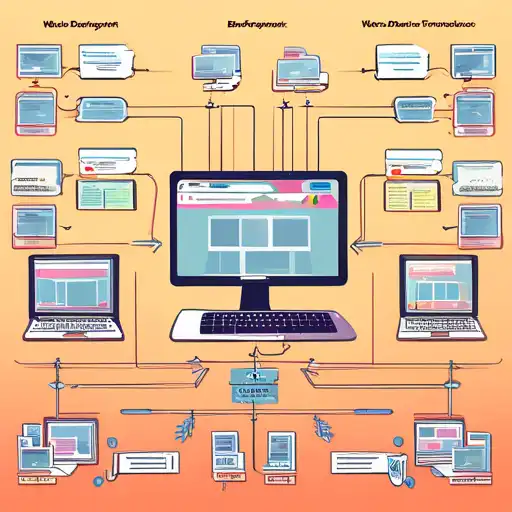Understanding Web Development Frameworks
In the ever-evolving world of web development, choosing the right framework is crucial for building efficient, scalable, and maintainable websites and applications. With a plethora of options available, developers often find themselves at a crossroads, trying to determine which framework best suits their project needs.
What Are Web Development Frameworks?
Web development frameworks are software libraries designed to support the development of web applications by providing a standard way to build and deploy them. They offer a foundation upon which developers can build, saving time and effort by eliminating the need to write code from scratch.
Types of Web Development Frameworks
There are primarily two types of web development frameworks: frontend (or client-side) and backend (or server-side). Frontend frameworks, such as React, Angular, and Vue.js, focus on the user interface and user experience. Backend frameworks, like Django, Ruby on Rails, and Express, handle server-side operations, database interactions, and application logic.
Factors to Consider When Choosing a Framework
Selecting the right framework involves considering several factors that align with your project requirements and team expertise.
Project Requirements
The nature and scope of your project play a pivotal role in framework selection. For instance, a single-page application (SPA) might benefit from a frontend framework like React or Angular, whereas a content-heavy website might be better served by a backend framework like Django or Ruby on Rails.
Learning Curve
The complexity and learning curve of a framework can significantly impact development time. Frameworks with extensive documentation and community support, such as Vue.js, can accelerate the learning process for beginners.
Community and Ecosystem
A vibrant community and a rich ecosystem of plugins and tools can enhance productivity and provide solutions to common problems. Frameworks like React and Django boast large communities and extensive libraries.
Performance and Scalability
Performance requirements and scalability prospects are critical for long-term success. Lightweight frameworks like Express might be suitable for small projects, whereas more robust frameworks like Angular are designed for scalable enterprise applications.
Popular Web Development Frameworks in 2023
Here’s a look at some of the most popular web development frameworks today:
- React: A JavaScript library for building user interfaces, known for its virtual DOM feature.
- Angular: A platform for building mobile and desktop web applications, offering a comprehensive solution.
- Vue.js: A progressive framework for building UIs, celebrated for its simplicity and flexibility.
- Django: A high-level Python web framework that encourages rapid development and clean, pragmatic design.
- Ruby on Rails: A server-side web application framework written in Ruby, emphasizing convention over configuration.
Conclusion
Choosing the right web development framework is a decision that can significantly affect the success of your project. By carefully considering your project requirements, team expertise, and the framework’s ecosystem, you can select a tool that not only meets your current needs but also supports future growth. Remember, the best framework is the one that aligns with your goals and enhances your productivity.
For more insights into web development, check out our articles on web development trends and frontend vs backend development.
